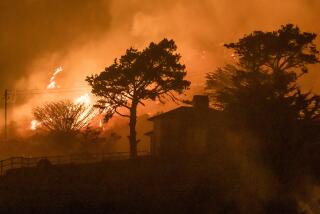Thrifts in State Pushing Interest Rates on Big CDs Up Near the 10% Level
- Share via
Interest rates on certificates of deposit in California are beginning to approach 10% for the first time since the mid-1980s, as savings institutions try to catch up with high rates on Treasury bills and money market funds and respond to last week’s hike in the prime lending rate.
Some smaller thrifts in California have recently raised rates on their six-month jumbo CDs--those requiring deposits of close to $100,000--to as high as 9.75%, said Robert K. Heady, editor of Bank Rate Monitor, a North Palm Beach, Fla., newsletter that tracks CD rates nationwide.
Overall, he said, jumbo CD rates offered by top-paying institutions nationwide increased about one-quarter of a percentage point this past week. That came in response to Friday’s half-point increase in banks’ prime lending rate to 11% from 10.5%.
“Californians will be receiving 10% on jumbo CDs by mid-year” if consensus predictions on further interest rate hikes come true, Heady said.
Such a rate scenario would be welcome to many savers who have in recent weeks shifted deposits at a record pace out of the nation’s crisis-ridden S&L; system into alternative investments, including Treasury bills and money market funds, which have been paying their highest rates in years. Short-term Treasuries still pay more than short-term CDs on average, but in the past two or three weeks, savings institutions have been closing the gap, experts say.
Thrift institutions as a group lost $8.1 billion in deposits in December--a record for any month--and the outflow is believed to have continued in January, although official government figures are not yet available.
The most aggressive of the rate hikes have continued to be at smaller thrift institutions, and generally involve only jumbo CDs.
Retail CDs--those generally requiring minimum deposits as low as $1,000--still average below 9% on shorter maturities. The average yield for six-month retail CDs, for example, is 8.48% nationally, up 0.07 percentage points from the previous week, according to Bank Rate Monitor.
Such increases are consistent with the pattern of increases following other recent prime rate hikes, Heady said.
As such, they have not triggered a rate war in California similar to one that may be brewing in Texas, where one aggressive institution, Commonwealth Savings in Houston, has been offering a 10.75% rate. However, it reportedly has backed down from that lofty level, cutting its rate by one percentage point on Thursday, Heady said.
If a rate war were to erupt in California, it could further boost the costs of the Bush Administration’s recently unveiled thrift bailout plan, under which some 224 insolvent thrifts will be taken over in the next few weeks.
Institutions forced to match aggressive rate increases may see their profit margins eroded, which could in turn put more of them into financial trouble and erode all S&L; profits.
“It’s just generally a drag on the financial system,” said Alan Whitney, spokesman for the Federal Deposit Insurance Corp., the insurance fund that is overseeing thrifts that are being taken over.
In the past, weaker institutions often paid the highest rates in order to attract deposits. However, that is becoming less true, as only one of the five California thrifts paying the highest rates on six-month jumbo CDs--Founders Savings in Los Angeles--is considered to be insolvent.
According to Bank Rate Monitor, three California thrifts now offer six-month jumbos at 9.75%: First Network Savings Bank in Los Angeles, Pacific Coast Savings in San Francisco and County Savings Bank in Santa Barbara. Two others, Butterfield Savings in Santa Ana and Founders, were at 9.5%.
At the three largest California banks, Bank of America, Security Pacific and Wells Fargo, rates also have taken off in the past week, said Norberto Mehl, chairman of Banxquote Money Markets, a New York rate information service.
The average yield on six-month CDs at the big three has risen to 8% from 7.73%, while one-year certificates rose to 8.2% from 7.9%, Mehl said. While that still is low relative to competitors, a rise that large previously would have taken weeks, he said.
More to Read
Inside the business of entertainment
The Wide Shot brings you news, analysis and insights on everything from streaming wars to production — and what it all means for the future.
You may occasionally receive promotional content from the Los Angeles Times.










